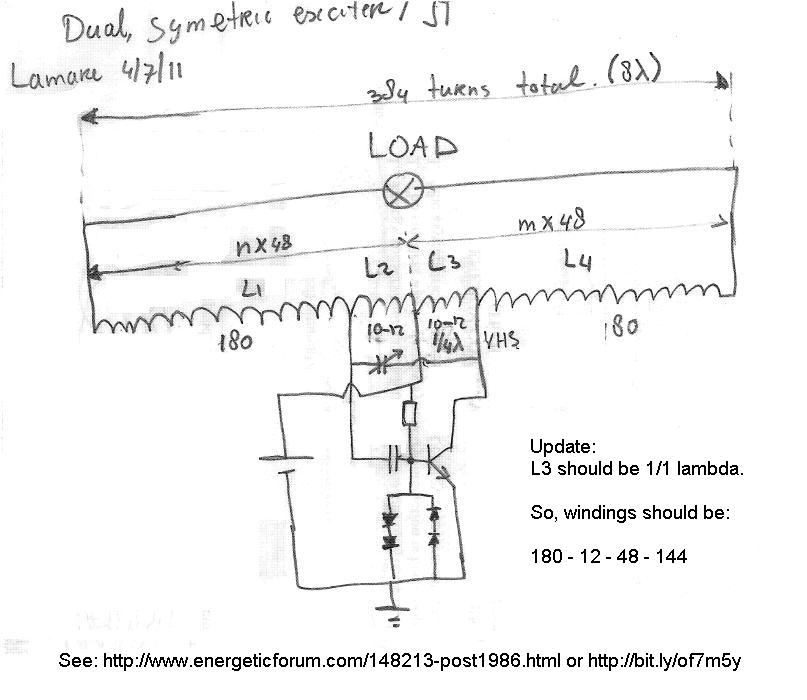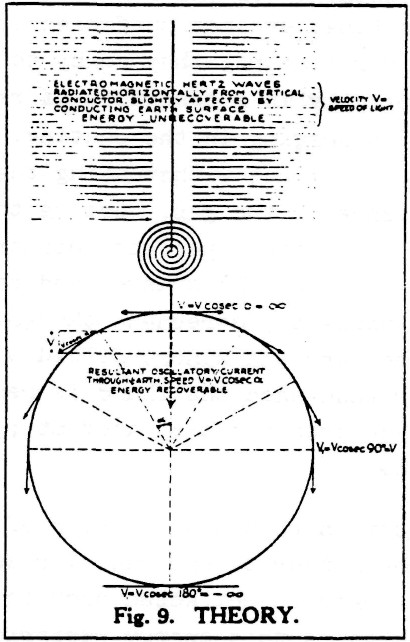The tubes themselves need no rectification though, but it does depend on the application for sure and safety within all experiments 
For complete wireless you just bring one near to the tower and it will light, then draw it away to whatever range the tower can support (when not using matched resonant towers).
A 1 wire system needs only to connect to the top of the tower, the unconnected end of the secondary. Then run that wire to all terminals on the fluoro.
One thing i've always found is that common plastic cased FWBR's are highly inferior within our operating conditions, compared to little 1N4148's. Examples would be - GBU6D, KBL08, D3SB60.
Interestingly, i've encountered many PC monitors and other circuits where 1N5408's are used, with tiny ferrite rings around the bases of each ones legs.
1N4148's have been far and away the best performers for own experiments. Best rectification circuits have normally been comprised of a 30ish gauge 12 turn coil, 4x 1N4148 diodes as a bridge rectifier and a 10uF 16V cap across the output. That system on a 12V Slayer circuit is good for approx 4V at up to 500mA.
One particular success some time ago saw amazing results with charging a cellphone to a far range...that used Zener diodes of whose spec I have no idea. Everything of mine is salvaged and recycled.
Here's that vid:
‪The future of phone charging - extra‬‏ - YouTube
Another method was recently suggested by jonnydavro (video on his YouTube channel) where a small signal transistor with a small aerial wire to it's Base is used, plus a 330uF 16V cap or so across the load.
Straight cap charging with very high potentials has been achieved most easily by use of a simple AV plug and parallel connecting several high capacity caps, such as 220uF 400V. They will charge from the output of a similar tower some inches away and produce voltages up to the lowest rated if different types are used. The result, when shorted, are huge discharge sparks after a 1 minute charge time.

For complete wireless you just bring one near to the tower and it will light, then draw it away to whatever range the tower can support (when not using matched resonant towers).
A 1 wire system needs only to connect to the top of the tower, the unconnected end of the secondary. Then run that wire to all terminals on the fluoro.
One thing i've always found is that common plastic cased FWBR's are highly inferior within our operating conditions, compared to little 1N4148's. Examples would be - GBU6D, KBL08, D3SB60.
Interestingly, i've encountered many PC monitors and other circuits where 1N5408's are used, with tiny ferrite rings around the bases of each ones legs.
1N4148's have been far and away the best performers for own experiments. Best rectification circuits have normally been comprised of a 30ish gauge 12 turn coil, 4x 1N4148 diodes as a bridge rectifier and a 10uF 16V cap across the output. That system on a 12V Slayer circuit is good for approx 4V at up to 500mA.
One particular success some time ago saw amazing results with charging a cellphone to a far range...that used Zener diodes of whose spec I have no idea. Everything of mine is salvaged and recycled.
Here's that vid:
‪The future of phone charging - extra‬‏ - YouTube
Another method was recently suggested by jonnydavro (video on his YouTube channel) where a small signal transistor with a small aerial wire to it's Base is used, plus a 330uF 16V cap or so across the load.
Straight cap charging with very high potentials has been achieved most easily by use of a simple AV plug and parallel connecting several high capacity caps, such as 220uF 400V. They will charge from the output of a similar tower some inches away and produce voltages up to the lowest rated if different types are used. The result, when shorted, are huge discharge sparks after a 1 minute charge time.

 :
:




 I'm also looking for a 12v lighting system for my room. At the moment I'm restoring an old car battery with my Bedini by day and discharging it with 12v lights at night, so it would be good to have some usable system to work with the batteries instead of the standard lights once I've finished all the charge/discharge cycles. Using solar panels to power a Bedini to charge batteries to run these circuits, which at these input values will run for days if not weeks off a single charge, the whole thing would be pretty much free to run. So this seems like an excellent place to start fiddling
I'm also looking for a 12v lighting system for my room. At the moment I'm restoring an old car battery with my Bedini by day and discharging it with 12v lights at night, so it would be good to have some usable system to work with the batteries instead of the standard lights once I've finished all the charge/discharge cycles. Using solar panels to power a Bedini to charge batteries to run these circuits, which at these input values will run for days if not weeks off a single charge, the whole thing would be pretty much free to run. So this seems like an excellent place to start fiddling 

Comment